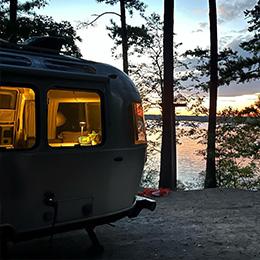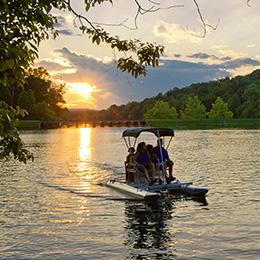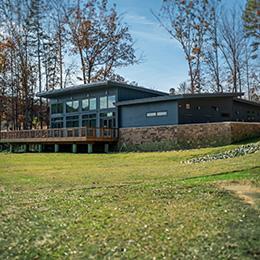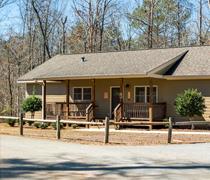Indian Springs State Park’s natural artesian spring has been used by generations of people for its flowing mineral water, that some claim to have homeopathic qualities. Produced by the pressure of the earth forcing underground water to the surface, the water at Indian Springs picks up many minerals during that process, leading to its unique “Sulphur” smell. Known to Native Americans long before the influx of Europeans, the area has always maintained a steady flow of people coming to seek healing, collect drinking water, or recreate around this natural marvel.
Indian Springs State Park has its origins following a series of treaties between the Creek Nation, the United States, and the state of Georgia in the 1820s. The Creeks suffered terribly during warfare with the United States in 1813-14, and were facing pressure from a Georgia government that wanted to acquire remaining Creek lands in the state. The signing of the First Treaty of Indian Springs in 1821, though unrecognized by the federal government, ceded thousands of acres including what is now Indian Springs State Park.
William McIntosh, a chief of the Lower Creeks (Creeks residing in what is now central and southwest Georgia), profited by acquiring several hundred acres of land through his involvement with the 1821 treaty and built the Indian Springs Hotel, which still stands across from the park entrance. Against the wishes of the Upper Creeks (those living in parts of present day Alabama) McIntosh and his allies signed a second treaty which sold all remaining Creek lands in 1825. Since McIntosh was viewed as not representing all Creeks, many of them, particularly the Upper Creeks, considered it a fraudulent treaty and McIntosh and several others were killed for their complicity in signing the treaty.
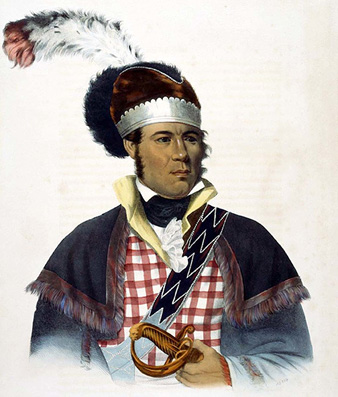
William McIntosh
Following McIntosh’s death, the Creeks, still under significant pressure, were forced to come to a compromise with United States officials and signed the Treaty of Washington in 1826. As these former Creek lands were added to the growing state of Georgia, one of the outcomes was the establishment of land lots around the springs. Georgia’s government set aside Land Lot #1 (the area directly around the springs) to be held in-perpetuity as a public recreation area. Thus making Indian Springs the oldest state owned recreation area in the country.
From these early days the community around Indian Springs grew with the coming of railroad and public access that brought visitors from all over the country. Resort hotels sprang up and from the mid-1800s through the early 1900s a variety of hotels, some as large as 700 rooms, graced the area known as McIntosh, and later Flovilla. Thousands flocked to the area and the tourist industry thrived until changing economic conditions and other factors brought an end to the “Gilded Age.”
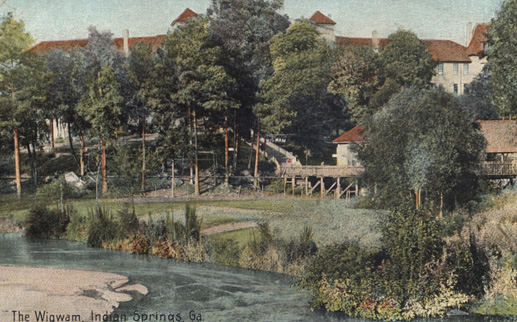
The Wigwam Hotel 1890-1921
Many of the hotels had burned, fell into disuse or were torn down by the 1920s. In 1927, just two years prior to the stock market collapse, the State of Georgia officially named the property Indian Springs State Park, making it Georgia’s oldest state park.
The difficulty of the depression gave rise to President Roosevelt’s “New Deal” and the origin of the Civilian Conservation Corps (CCC). Company 459 came to Indian Springs and the CCC “boys” built the stone structures that still grace the land around the spring. The CCC boys are largely responsible for providing the infrastructure on which the modern park is built.
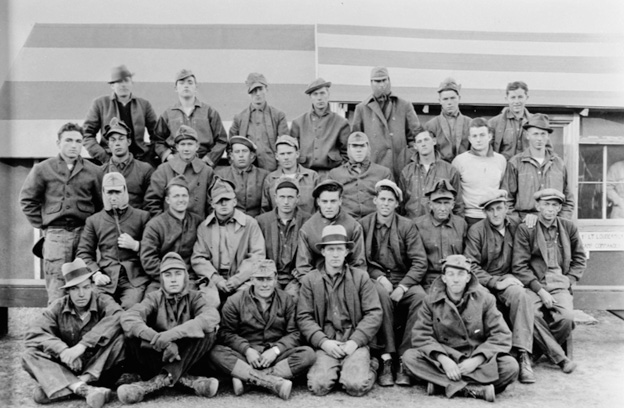
The CCC “boys” of Company 459 (photo courtesy Georgia Archives, Vanishing Georgia Collection)
In the years after World War II, as camping became a national past-time with the creation of the interstate system and more affordable travel, Indian Springs again became a destination stop. A campground was constructed and the park’s lake was built in the 1950s. Throughout the years cottages came on line and other recreational amenities were added.
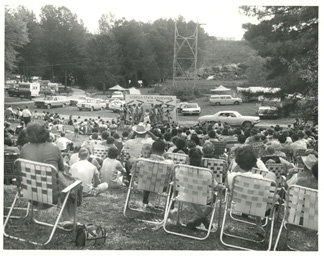
National Campers and Hikers Association Camporee at Indian Springs in the 1960s
In the 1990s, the park acquired the home “Idlewilde” and it was restored and is in use as the park’s office and visitor center. Indian Springs is currently a perennial favorite for campers, cottage guests and those who still come to collect water from the artesian spring, and Idlewilde and the Indian Springs Hotel are both listed on the National Register of Historic Places.






